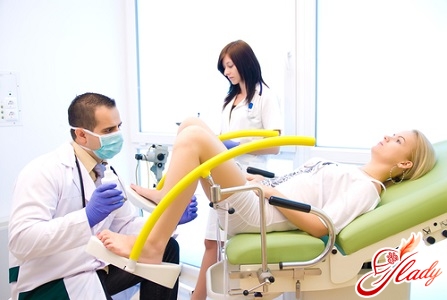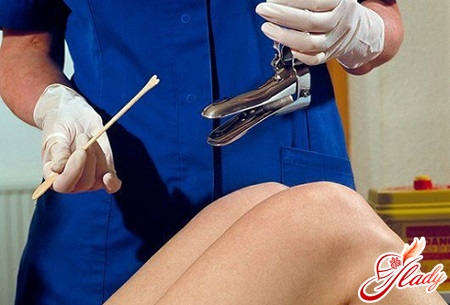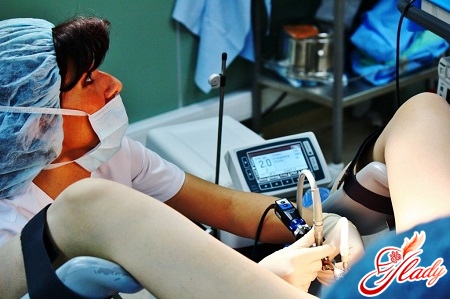
Women diagnosed with cervical erosionuterus, are in no hurry to treat this disease, or, what is much worse, self-medicate. Both options are quite dangerous for a woman's health, and sometimes for her life. It is worth noting that the oldest and most reliable method of treating erosion is diathermocoagulation of the cervix.
Erosion: what is the disease
Statistics show that every seconda woman is diagnosed with "erosion" at least once in her life, and her cervix and uterus suffer greatly from it. In the medical dictionary, this term means a defect in the mucous membrane of the cervix. Everything seems very simple. But, unfortunately, it only seems so. This defect is a real pain in the neck for many women and requires careful treatment. If you have been diagnosed with congenital erosion (which is quite rare), you are lucky. In this case, the vulnerable and delicate tissue of the vagina "began to deteriorate" on the cervix due to hormonal imbalances. This disease goes away on its own after childbirth or any other hormonal surges. But, even despite this, congenital erosion requires specialist observation. There is also true erosion (a wound appears on the epithelium), which is also rare. This wound usually heals without intervention, in 2-3 weeks. But the most common is pseudo- or false erosion. It appears in the same way as congenital erosion, but it does not heal on its own. The delicate tissue of the vagina, which is not naturally endowed with protective functions, is susceptible to the negative influence of an aggressive environment and infections. All this can end very badly. In this case, of course, treatment of the cervix is necessary.
Erosion: causes
According to research, no one can say for sureto determine what causes this defect of the cervical tissue, there is only an approximate list of reasons for its occurrence. Firstly, erosion can be provoked by hormonal imbalances. This is exactly what happens in girls from 13 years old. Age-related changes, hormonal development can cause erosion. The second reason is the early onset of sexual relations by female representatives. For an immature mucous membrane of the cervix, infection, even the most harmless, can be very destructive and in almost 100% of cases leads to erosion. Infections are especially aggravated against the background of a weak immune system, so you have to fight a chain of diseases. The third reason is inflammatory processes of the female genital tract. That is why erosion treatment usually begins with treating existing inflammations. The fourth reason is mechanical damage. This refers to abortions, childbirth, and sometimes just injuries received during sex. Erosion appears as a result of cracks or ruptures in the tissues of the cervix.
Erosion of the cervix: symptoms
There are quite a lot of existing diseasesare manifested by pain. For many, pain is the very impetus that makes a person go to the doctor. Erosion usually occurs painlessly. It is quite difficult to diagnose it by any symptoms, since they can accompany many other diseases. Erosion can be diagnosed by a gynecologist only during an examination. But there are still symptoms that sometimes accompany this disease. So, any discharge with an admixture of blood, especially those that appear after sexual intercourse - this is the surest sign of erosion. Such discharge can also be signs of a precancerous condition of the organs (genitals) or a breakdown of an early pregnancy, so with such manifestations you need to hurry to see a doctor. Most often, women who are diagnosed with erosion feel completely healthy, but they still periodically experience pulling painful sensations in the lower abdomen, pain during sexual intercourse, and heavy discharge. Symptoms can also include a failure of the menstrual cycle. Once again, it is necessary to emphasize the need to visit a gynecologist in case of any symptoms. And do not be afraid: everything that was diagnosed at an early stage is treatable!
Erosion: treat or not
Sometimes you can hear how after a diagnosis"erosion", without any treatment at the next examination its signs are not detected. In this case we are talking about congenital erosion. Therefore, you should not let things slide and wait for some miracle. In addition, improper treatment, self-medication, or lack of treatment can end badly - erosion can develop into a malignant tumor or other unpleasant diseases. The only case that can affect the disappearance of erosion without treatment is childbirth (if the erosion is congenital). After childbirth, the tissues of the cervix and the uterus itself are completely renewed. But even here there is no 100% guarantee of cure. For women who have not given birth, surgical treatment is not recommended. For those who have given birth, there are many surgical methods of treating erosion. Each of them has its own disadvantages and advantages, so it is, of course, up to you and your doctor to choose. The most common method for treating erosion is diathermocoagulation.
Diathermocoagulation: the essence and consequences of the method
This intervention is the oldest andthe most reliable method of treating cervical erosion. It is based on the use of high-frequency electric current, which is formed between two electrodes. The first electrode has the shape of a ball, it is inserted into the vagina. The other electrode is placed under the lower back. After turning on the electrodes, heat is generated, which leads to the gradual melting of the affected areas of the mucous membrane. This procedure is performed for half an hour, during which the electric current is supplied many times for several seconds. The effectiveness of diathermocoagulation is more than 75%. Full recovery occurs in 2-3 months.
Consequences of diathermocoagulation
Diathermocoagulation can cause quitea large number of complications. For example, after the current is applied to damaged tissue, scars remain, these scars make the uterine canal narrower. This can cause it to rupture during childbirth. That is why diathermocoagulation is used only for treating women who have given birth. Also, this procedure can lead to infertility, since there is a risk of infection. If the wound surface is too large, a huge number of vessels are damaged, which will cause bleeding. Another consequence of this operation is endometriosis. Endometriosis is a pathological process during which tissue similar to the endometrium grows outside the uterine cavity (the endometrium is the cellular layer that lines the uterine cavity).
After the procedure
Due to the complications and negative effects presentconsequences after diathermocoagulation a woman needs to be observed by her gynecologist for some time. For example, in the first month after the procedure, the doctor should be visited 2 times a week. Subsequent visits should be every 2 months for 1 year. It is also recommended to wait with lifting weights and sexual intercourse. Usually, local treatment of wounds with antibacterial ointments is prescribed, which help them heal quickly and maintain their sterility. A woman may have transparent or bloody discharge for a month. General weakness of the body and pain in the lower back may be observed. Diathermocoagulation has the following contraindications:
- childbirth in recent times;
- pregnancy;
- the presence of malignant tumors in the uterus;
- inflammation in the vagina and cervix.
Women who have already experienced what it is likediathermocoagulation of erosion, note that this method of getting rid of the disease is very painful. Many compare the pain with contractions and note that in the place where the electrode touches, heat is felt.








